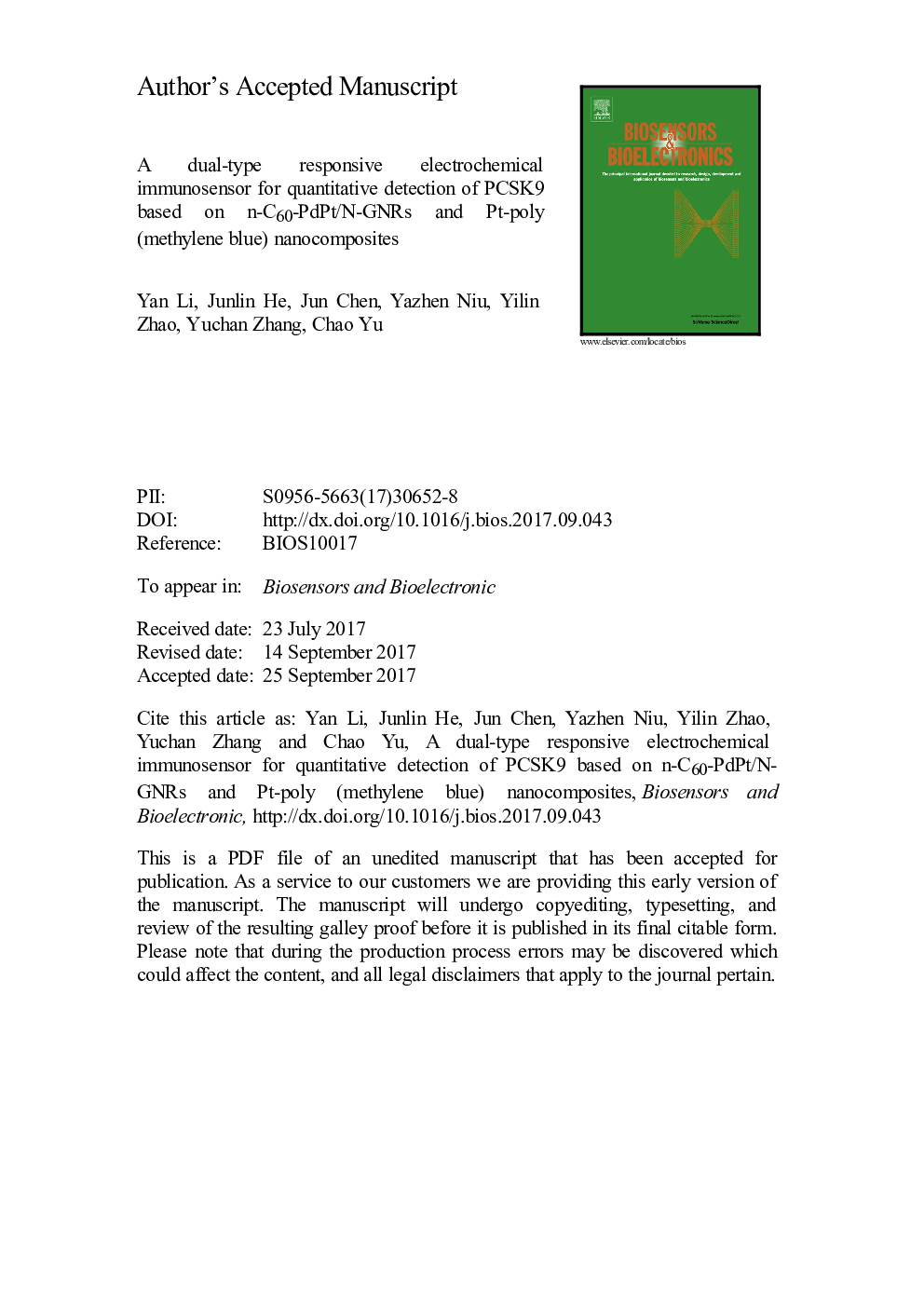| Article ID | Journal | Published Year | Pages | File Type |
|---|---|---|---|---|
| 5030735 | Biosensors and Bioelectronics | 2018 | 22 Pages |
Abstract
In this study, a dual-type responsive electrochemical immunosensor was developed for the quantitative detection of proprotein convertase subtilisin/kexin type 9 (PCSK9), a potential biomarker of cardiovascular disease in serum. N-doped graphene nanoribbons (N-GNRs) with good conductivity were used as the sensing matrix modifying the glassy carbon electrode. Palladium platinum alloy (PdPt) nanoparticles with high catalytic performance toward the reduction of hydrogen peroxide (H2O2) were reduced onto amino-functionalized fullerene (n-C60-PdPt) and significantly amplified the electrochemical signal recorded by the amperometric i-t curve. Furthermore, staphylococcus protein A (SPA) with antibody orientation function was introduced to improve the immunoreaction efficiency. Accordingly, a label-free immunosensor was fabricated based on n-C60-PdPt/N-GNRs for the quick detection of PCSK9. Meanwhile, to realize ultrasensitive detection of PCSK9, Pt-poly (methylene blue) (Pt-PMB) nanocomposites synthesized by a one-pot method for the first time were used as a novel signal label, which exhibited uniform morphology as well as good conductivity and produced an electrochemical signal recorded by differential pulse voltammetry (DPV). Herein, a novel sandwich-type immunosensor was designed using n-C60-PdPt/N-GNRs as the sensing matrix and Pt-PMB as the signal label for sensitive detection of PCSK9. Under optimal conditions, the label-free immunosensor showed a linear range of 10 pg mLâ1 to 100 ng mL â1 with a detection limit of 3.33 pg mLâ1 (S/N=3), and the sandwich-type immunosensor exhibited a linear range of 100 fg mLâ1 to 100 ng mL â1 with a detection limit of 0.033 pg mLâ1 (S/N=3) for PCSK9 detection, indicating its potential application in clinical bioassay analysis.
Keywords
Related Topics
Physical Sciences and Engineering
Chemistry
Analytical Chemistry
Authors
Yan Li, Junlin He, Jun Chen, Yazhen Niu, Yilin Zhao, Yuchan Zhang, Chao Yu,
